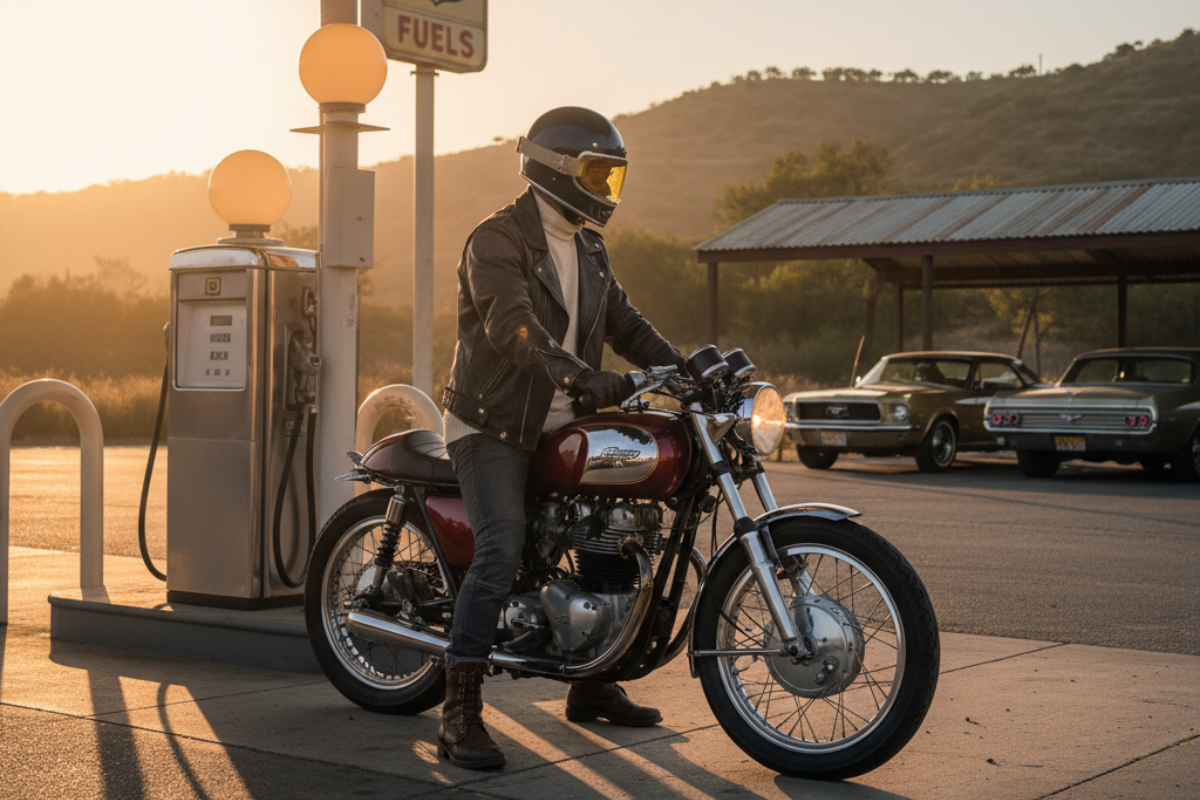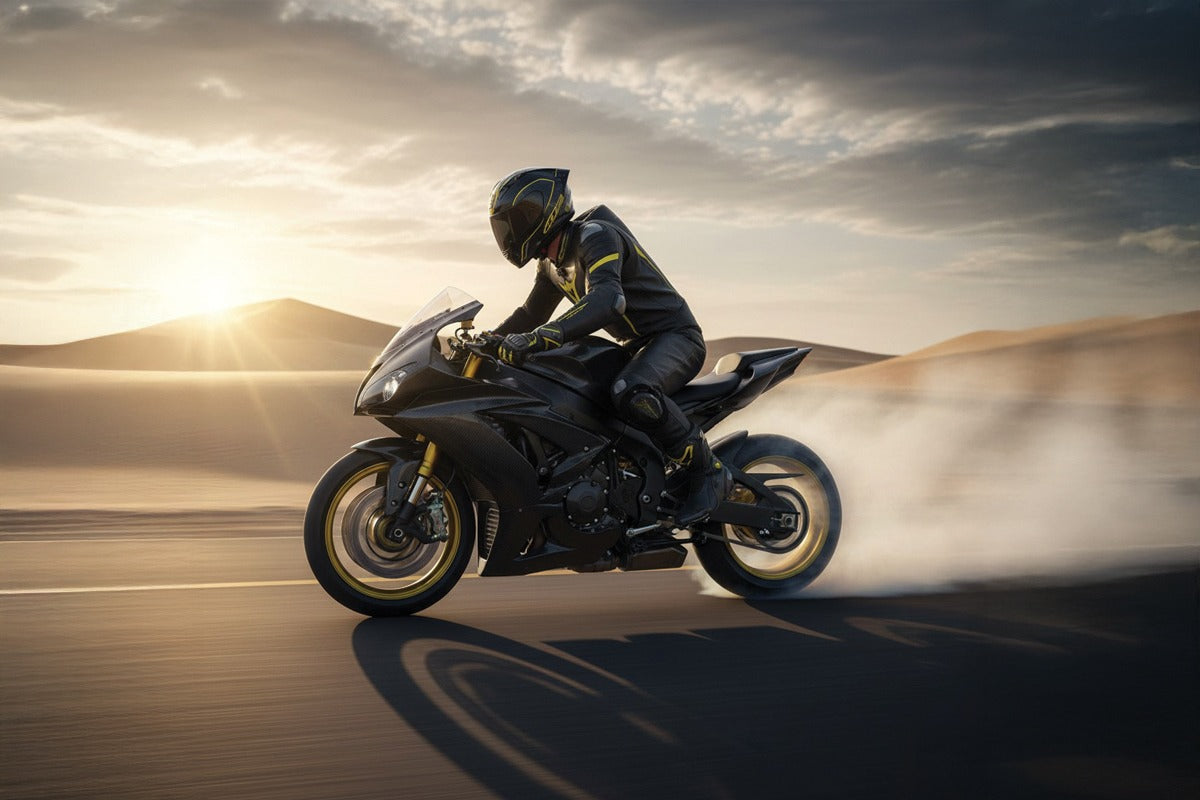Don't Get Hot-Headed: Essential Tips to Keep Your Motorcycle From Overheating
Riding your motorcycle on a beautiful day is one of life's great pleasures. But that pleasure can quickly turn into a roadside headache if your engine starts to overheat. An overheating engine isn't just an inconvenience; it can cause serious and expensive damage. Fortunately, with a little knowledge and proactive care, you can keep your bike running cool and smooth. Let's dive into the essential tips for preventing your motorcycle from overheating.
Know Your Engine: Air-Cooled vs. Liquid-Cooled
First, it's helpful to understand how your motorcycle's engine cools itself. There are two primary types:
-
Air-Cooled Engines: These engines rely on airflow to dissipate heat. As you ride, air moves across the engine's metal fins, drawing heat away. They are simpler in design but can be more susceptible to overheating in slow-moving traffic or on extremely hot days when airflow is minimal.
-
Liquid-Cooled Engines: These engines use a liquid coolant (a mix of antifreeze and water) that circulates through passages in the engine to absorb heat. The heated liquid then travels to a radiator, where a fan and airflow cool it down before it cycles back to the engine. This system is more complex but offers more consistent temperature control, especially in demanding conditions.

Your #1 Prevention Tool: Basic Maintenance
The single most effective way to prevent your motorcycle from overheating is through regular and basic engine maintenance. A well-maintained engine is an efficient engine, and an efficient engine runs cooler. This includes:
-
Regular Oil Changes: Using the correct grade and amount of clean oil.
-
Clean Air Filter: Ensuring unrestricted airflow to the engine.
-
Radiator Health: For liquid-cooled bikes, keeping the radiator fins clean and free of debris (bugs, dirt, mud) allows air to pass through effectively.
Think of it like this: a clean and well-serviced engine can "breathe" properly and work without unnecessary strain, which naturally keeps its temperature in check.
The Coolant Cocktail: Getting the Mix Right
For those with a water-cooled motorcycle engine, maintaining the right coolant and water mixture is absolutely vital. Most manufacturers recommend a 50/50 mix of antifreeze/coolant and distilled water.
Why is this ratio so important?
-
Pure water has excellent heat absorption properties but boils at a relatively low temperature (100°C or 212°F) and can cause corrosion.
-
Pure antifreeze has a much higher boiling point and a lower freezing point, but it doesn't transfer heat as effectively as water.
The 50/50 blend provides the perfect balance: it raises the boiling point and lowers the freezing point of the mixture while maintaining excellent heat-transfer capabilities. Never use just plain water, as it won't offer the necessary protection against boiling over or internal corrosion.
Why Motorcycles Overheat and How to Address It
Overheating typically happens when the engine generates heat faster than the cooling system can remove it. Common culprits include:
-
Heavy Traffic: Stop-and-go riding drastically reduces airflow, especially for air-cooled bikes.
-
High RPMs at Low Speeds: Revving the engine without moving much (like riding up a steep hill slowly) creates a lot of heat with little cooling airflow.
-
Hot Weather: High ambient temperatures make it harder for any cooling system to do its job.
If you find your bike starting to overheat, the first thing to do is pull over safely. Turn off the engine and let it cool down naturally. Do not immediately open the radiator cap on a liquid-cooled bike, as the system is pressurized and can spray scalding hot fluid.
The Idle Issue: Keep RPMs Low
An engine idling too high is a recipe for heat buildup. Anything above 1,500 RPMs is generally considered excessive for idling. At a standstill, there is no airflow moving over the engine or radiator. When you idle at a high RPM, the engine is working harder and generating significant heat, but the cooling system has no air moving past it to help dissipate that heat. It's like running in place while wearing a winter coat – you'll get hot fast! Keeping your idle speed at the manufacturer's recommended level (usually around 1,000-1,200 RPM) minimizes heat generation when you're not moving.
It's All in the Oil: The Importance of Circulation
The second major reason a motorcycle engine overheats is due to improper oil circulation. Engine oil does more than just lubricate moving parts; it plays a crucial role in cooling. Oil circulates throughout the engine, absorbing heat from critical components like pistons and cylinder walls and carrying it away.
If your oil level is too low, or the oil is old and has broken down, it can't effectively manage heat. This leads to friction and a rapid increase in temperature. Always check your oil level before a ride and stick to your manufacturer's recommended oil change schedule.
How to Tell If Your Motorcycle Is Overheating
Your bike will give you warning signs before a catastrophic failure. Pay attention to your senses:
-
Look 👀:
-
Temperature Gauge/Warning Light: This is your most direct indicator. If the needle enters the red zone or the light comes on, you have a problem.
-
Steam or "Smoke": White steam coming from the engine area is a clear sign that coolant is boiling over.
-
Leaking Fluid: Puddles of green, pink, or orange fluid under the bike indicate a coolant leak.
-
-
Smell 👃:
-
Sweet Smell: The smell of hot antifreeze is distinctively sweet. If you smell something like hot maple syrup, you likely have a coolant leak.
-
Burning Oil: A sharp, acrid smell could mean oil is leaking onto a hot engine part.
-
-
Listen & Feel 👂:
-
Loss of Power: An overheating engine will often feel sluggish and unresponsive.
-
Pinging or Knocking: You might hear metallic "pinging" sounds as the engine struggles under the heat.
-
Excessive Heat: You may feel an unusual amount of heat radiating from the engine onto your legs.
-
Ride Cool, Ride Safe
Keeping your motorcycle from overheating is all about proactive care and being attentive to your machine. Regular maintenance, proper fluid levels, and smart riding habits are your best defense. By understanding how your bike’s cooling system works and knowing the warning signs, you can ensure many miles of trouble-free riding.
Wishing you a cool and safe journey on every ride!





